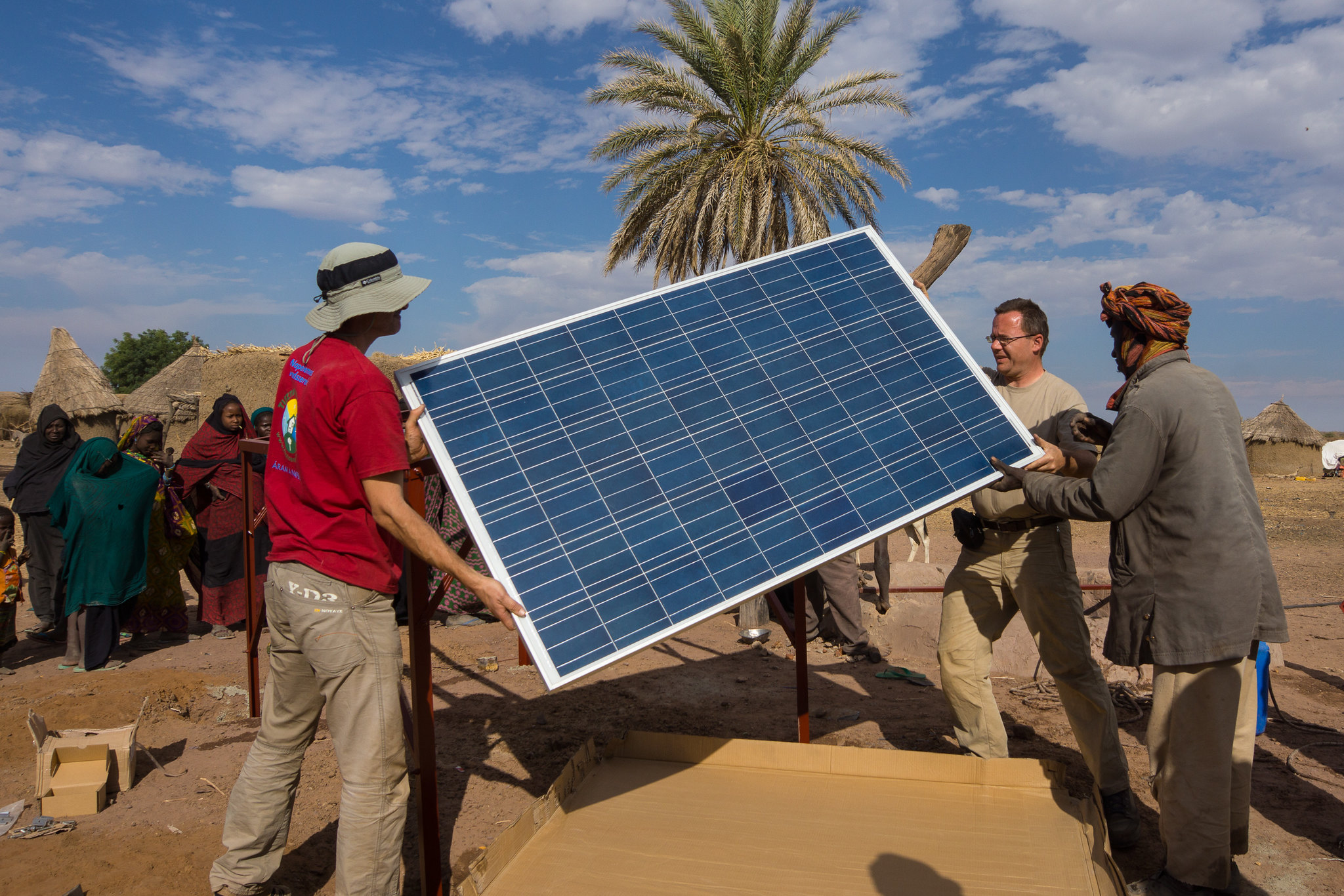Microgrid Technology in African Countries
 If you take a trip to Google Earth’s nighttime view of the world, you’ll see areas like the United States, Europe and Japan bursting with light. In these countries, electricity freely flows through a massive electrical grid, whirring through power plants and millions of electrical wires. Alternatively, satellite images of the African continent’s 54 countries show vast dark areas with a few scattered hotspots. However, this unequal spread of electrification may change in the near future. Microgrid technology in African countries is powering thousands of community’s electrical needs. The African continent’s electrification illustrates the broader trend of sustainable energy’s emergence in the developing world.
If you take a trip to Google Earth’s nighttime view of the world, you’ll see areas like the United States, Europe and Japan bursting with light. In these countries, electricity freely flows through a massive electrical grid, whirring through power plants and millions of electrical wires. Alternatively, satellite images of the African continent’s 54 countries show vast dark areas with a few scattered hotspots. However, this unequal spread of electrification may change in the near future. Microgrid technology in African countries is powering thousands of community’s electrical needs. The African continent’s electrification illustrates the broader trend of sustainable energy’s emergence in the developing world.
What is Microgrid Technology?
In simple terms, microgrid technology is a decentralized version of the massive electrical grids that exist in most developed nations. More definitively, a microgrid is “a local energy grid with control capability” that can work autonomously to both produce and supply power to small communities. The autonomy of microgrids limits the negative aspects of larger power grids, such as rolling blackouts.
In developed countries, certain essential businesses use microgrids to ensure a stable power source. For example, hospitals use microgrids in case a natural disaster would cut off power to large scale power grids. In many developing nations, governments are eagerly implementing microgrid technology in areas without pre-existing infrastructure.
Another benefit of microgrid technology is the easy integration of renewable energy sources. Presently, companies building microgrids in developing nations tend to rely on solar or wind energy due to their growing cost-efficiency. Peter Ganz, who studied microgrids through his master’s program in environmental management from Duke University’s Nicholas School of the Environment and currently works as Senior Energy Storage Analyst at EDF Renewables North America, said that “The idea that many businesses have in developing countries is to make these microgrids sustainable. This is so that, as developing countries gain energy access, they’re not stuck with this large fossil-reliant grid that we’re dealing with here in the United States, the EU and other large, developed nations.”
Africa’s Need for Electricity
Many companies like PowerGen, Energicity and Tesvolt are installing microgrids in several African nations to power homes, schools, hospitals and businesses. Many regions of Africa provide the ideal environment for sustainable solar energy. In addition, the overall cost of installing microgrids has dropped an estimated 25 to 30% since 2014.
Centering on Africa for microgrid technology development is necessary for worldwide electrification. Today, 13% of the world’s population does not have access to electricity. In particular, sub-Saharan Africa accounts for almost two-thirds of the world’s population without power.
In the mass movements for sustainable energy around the world, developing nations without existing electricity infrastructure see some advantages. Due to this lack of infrastructure, developing communities can begin to electrify local homes, businesses, and services with renewable sources. The integration of renewable energy into the grid will effectively prevent any future need to rely on fossil fuels.
PowerGen’s Work in African Nations
Founded in 2011, PowerGen is one of the main organizations serving on the frontlines of microgrid development in African nations. With a mission striving to provide “cleaner, smarter” and “decentralized” energy to Africa, PowerGen has installed sustainable energy utilities for more than 50,000 Africans who previously lacked electricity. The organization is far-reaching, deploying microgrids in Somalia, Kenya, Tanzania, Mozambique, Zambia, Uganda, Rwanda, Benin and Niger. PowerGen has also set up offices and planned projects in several other African countries The company also develops commercial and industrial (C&I) solar power for more widescale, sustainable electricity.
According to a statement by PowerGen CEO Sam Slaughter, the organization’s microgrids “typically serve 100-500 connections” and “have a geographic radius under one kilometer.” The grids can power anything running off electricity including refrigerators, TVs, electric cars and mobile phones. The payment is affordable for African users who use an easy “pay-as-you-go” system via “mobile money telecoms services” or cash.
PowerGen hopes to expand energy access to one million more Africans by 2025. One of the biggest challenges in installing new power in the continent is government cooperation and acceptance of microgrids, but the organization is actively working to broaden its microgrid coverage everywhere.
Importance of Smart Power in Developing Nations
In the mass movements for sustainable energy around the world, developing nations are actually at an advantage; since many developing communities have no or unreliable access to electricity, they can begin their energy journey with renewable sources, effectively cutting off reliance on fossil fuels in the future.
“Our electric grid is very much the product of a time before renewables when most, if not all, generation was from carbon-intensive fossil fuels,” said Ganz. “Now that we have developed technologies that are carbon-free or carbon-neutral, it would be great to help these [developing] countries achieve the levels of grid resiliency and electric reliability that we [in developed countries] have without the carbon intensity.”
– Grace Ganz
Photo: Flickr
